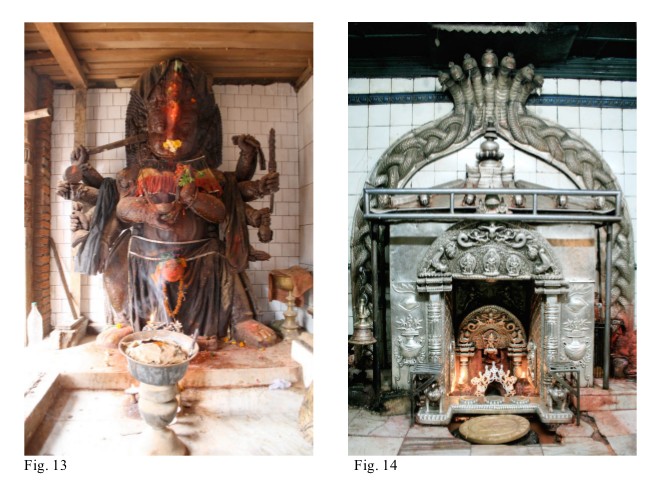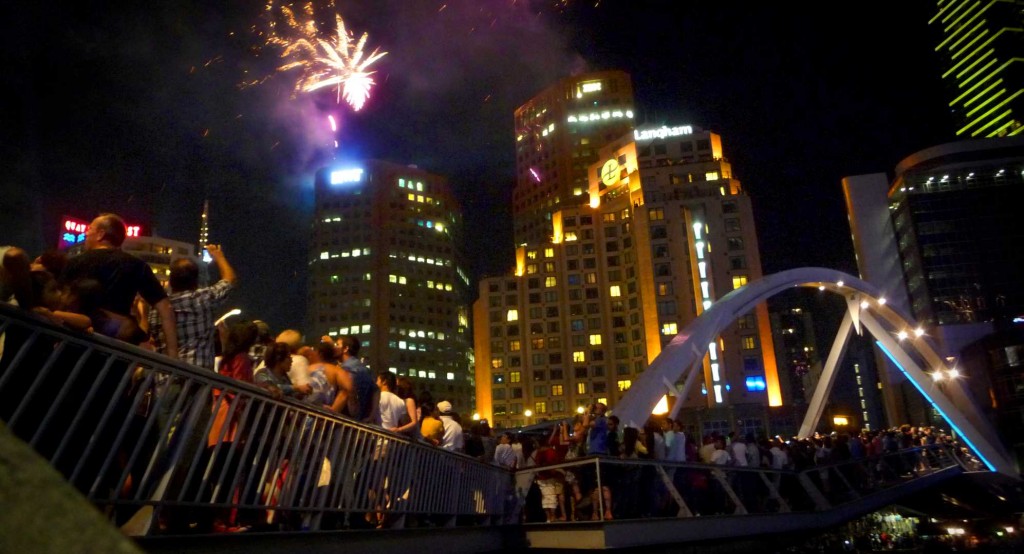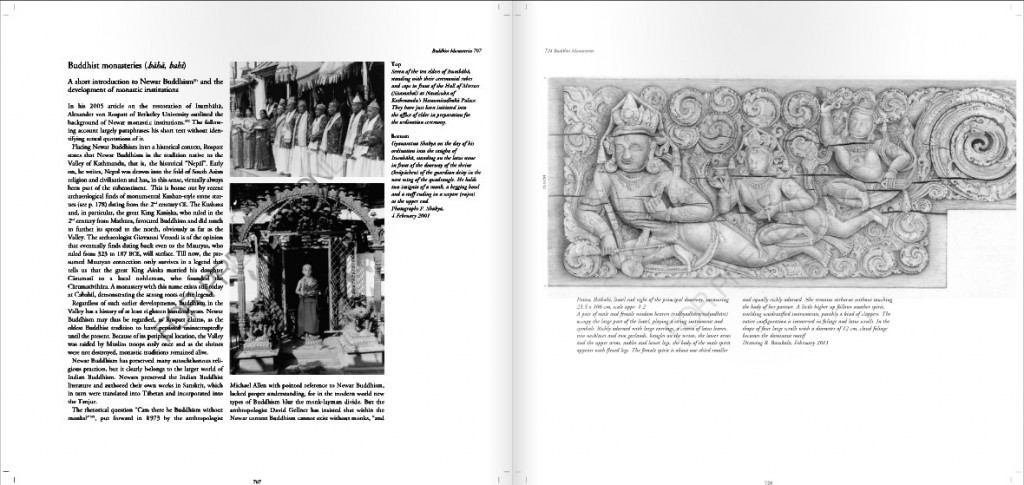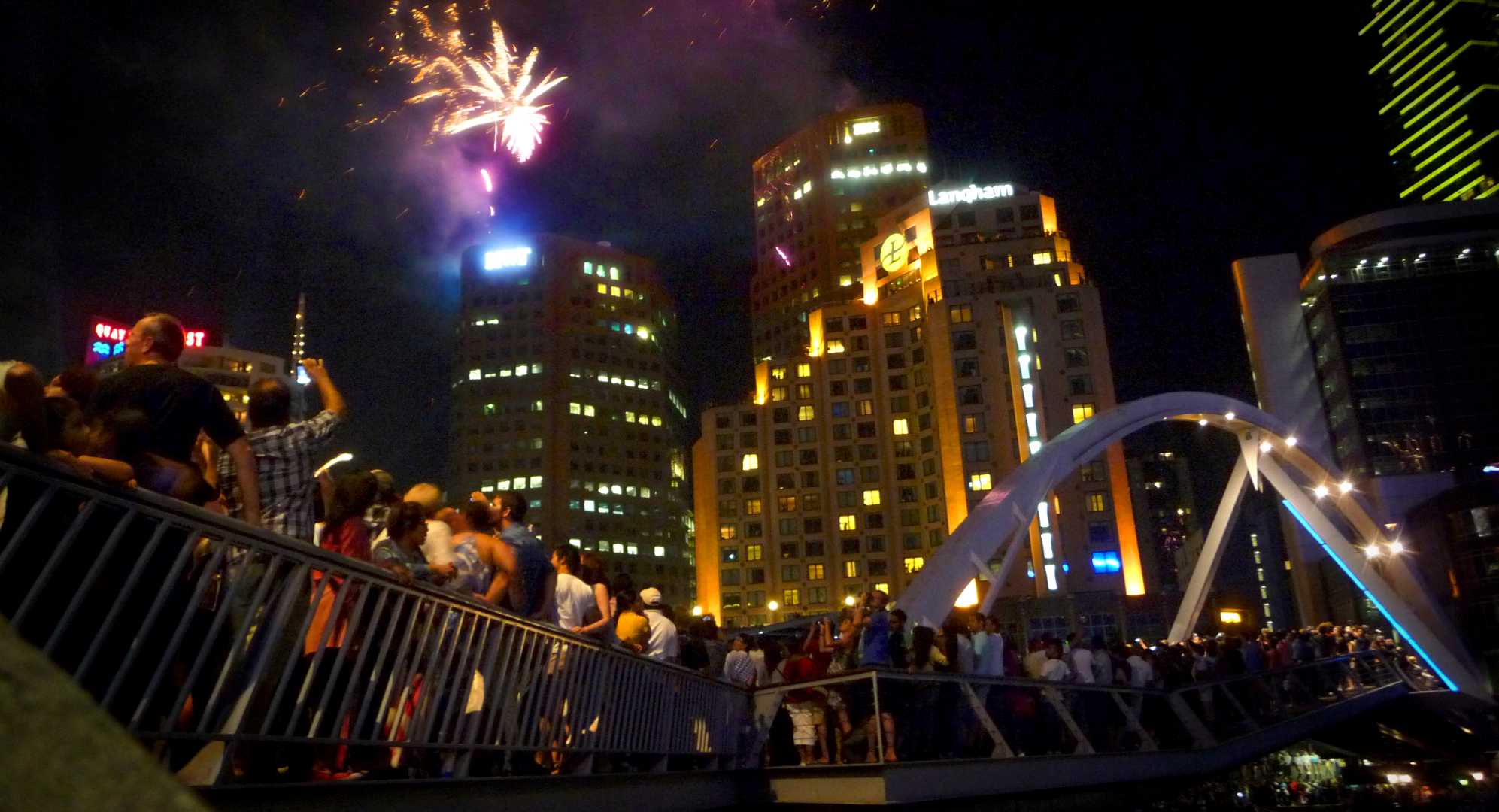田中公明 「『秘密集会』における勝義の曼荼羅について : Nāgabodhiの『安立次第論』第4章サンスクリット写本ローマ字化テキスト」 『東洋文化研究所紀要』 第162册, 2012.
Tanaka, Kimiaki. ‘Nāgabodhi’s *Samājasādhanavyavasthālī: The Tibetan Translation and Sanskrit Text of Chapter IV’. Memoirs of the Institute of Oriental Culture 162, 2012, pp.282(61)―267(76). [URI/PDF]
Li, Madhyamakāvatāra 6.1–97 (2012)
李学竹 〈《入中论颂》第六章1一97颂校勘〉 《中国藏学》 1, 2012. (ISSN 1671-6043)
Li, Xuezhu. ‘Madhyamakāvatāra-kārikā’. China Tibetology no.1, 2012, pp.1–16.
Slightly late news, but then this publication doesn’t seem to have been mentioned anywhere else (or brought to my attention) by anyone named in the acknowledgements. That isn’t too surprising, though. One of the three other publications mentioned by the author is an edition of Vasubandhu’s “Viṃśatikākārikā” (p.2), yet one of the nominal collaborators has established back in 2008 that this text should properly be titled Viṃśikā.
Continue reading “Li, Madhyamakāvatāra 6.1–97 (2012)”
Bründlmayer, ‘The Kumbheśvara temple in Lalitpur’ (2011)
Cecile Bründlmayer. Ethnography of the Kumbheśvara temple compound in Lalitpur (Patan), Nepal. Architecture, Iconography and Interaction within a sacred Landscape. Diplomarbeit, Universität Wien, 2011. 149 pp. [official site / PDF]

Karashima et al, ‘Abhisamācārikā Dharmāḥ’ (2012) [Or: Inappropriate Monastic Wedding Speeches]
What the śrāvakas aren’t supposed to sing to the bride on the happy day:
nagnā nadī anodikā nagnaṃ rāṣṭram arājakam |
istrī 'pi vidhavā nagnā sacesyā daśa bhrātaraḥ || [sic]
This and other abhivinaya jocularity to be found in:
Seishi KARASHIMA unter Mitwirkung von Oskar von Hinüber. Die Abhisamācārikā Dharmāḥ Verhaltensregeln für buddhistische Mönche der Mahāsāṃghika-Lokottaravādins
herausgegeben, mit der chinesischen Parallelversion verglichen, übersetzt und kommentiert. Bibliotheca Philologica et Philosophica Buddhica Volume XIII.1, 2, 3 (Grammatik und Glossar). Tokyo: International Research Institute for Advanced Buddhology, Soka University, 2012. ISBN 978-4-904234-05-1 [PDF flyer fixed]
Hugon & Tomabechi, ‘Pramāṇaviniścaya 3’ (2012)
Pascale Hugon and Toru Tomabechi (eds.) Dharmakīrti’s Pramāṇaviniścaya Chapter 3. Critically edited by Pascale Hugon and Toru Tomabechi with a preface by Tom J.F. Tillemans. Sanskrit Texts from the Tibetan Autonomous Region 8. Vienna: Austrian Academy of Sciences Press, 2012. 223 pp, €45. ISBN13: 978-3-7001-6893-5. [official site]
Tanaka, ‘Nāgabodhi’s *Samājasādhanavyavasthālī II’ (2011)
田中 公明 「『秘密集会』の身体曼荼羅論 : Nāgabodhiの安立次第論』第2章サンスクリット写本ローマ字化テキスト」 『東洋文化研究所紀要』 第160冊 2011.12
Tanaka, Kimiaki. ‘Nāgabodhi’s *Samājasādhanavyavasthālī: The Tibetan Translation and Sanskrit Text of Chapter II’ [in Japanese]. Tōyō Bunka Kenkyūjo kiyō 160, 2011, pp. 324(313)–338(299). [URI / PDF]
From the Abstract
“In this article I have transcribed the Sanskrit text of Chapter II of the Vyavasthālī. This chapter mainly explains the body-maṇḍala theory of the Guhyasamāja-tantra. For further details, reference should be made to pp. 333-324.”
Administrivia: Brief end-of-year report
- Traffic is up about 375% over last year, according to one metric. Many of the new visitors are sentient beings.
- The top three countries from which readers visit Jinajik are the USA, Japan and Germany (not necessarily in that order). Great nations like the great yāna, it seems.
- There may be no such thing as a free bhojana, but the lure of it is precisely what brings many of you here. The most clicked-on tag in 2011 is Sanskrit text, closely followed by PDF.
- The most read article this year, by far, was last year’s announcement of Michael Allen’s The Daśakarma Vidhi. (For those who might want more, I have a short review forthcoming in the Journal of the Oriental Society of Australia.)
- Complaints received in 2011: 0. Compliments received: 1. (A ratio that would please Mr. Micawber.)

Hanneder et al, Utpattiprakaraṇa, Vairāgyaprakaraṇa & Mumukṣavyavahāraprakaraṇa (2011)
Jürgen Hanneder und Peter Stephan. ‘Utpattiprakaraṇa: Vorläufiger Stellenkommentar. Erste Fassung vom August 2011. Erster Teil (1–59).’ adwm.indologie.uni-halle.de/PhilKommUtpatti.pdf
‘Stellenkommentar zum Mokṣopāya: Vairāgyaprakaraṇa, Mumukṣavyavahāraprakaraṇa‘. DFG-Projekt SL40/9-1: Anonymus Casmiriensis. 15.08.2011. adwm.indologie.uni-halle.de/PhilKommVaiMu.pdf
Gutschow, ‘Architecture of the Newars’ (2011)
Niels Gutschow. Architecture of the Newars: A History of Building Typologies and Details in Nepal. 3 volumes. Serindia, November 2011. 1030 pp. USD$450 (excluding postage). ISBN 978-1-932476-54-5 [official site]
From the Abstract
Architecture of the Newars by Niels Gutschow presents the entire history of architecture in the Valley of Kathmandu and its neighbours over a period of 1,500 years — right up to the present. It is a rare tribute to an urban culture which has preserved fascinating lifestyles to this very day. Gutschow first travelled to Nepal in 1962, returning in 1970 after reading architecture, and has constantly worked since then on the connections between ritual and the city. Since 1980 he has worked with measured drawings to identify the various building typologies, which are documented in three volumes with 862 photos and 939 drawings.

The first volume presents the complexity of the sacred landscape of the Valley and the urban context as well as the early periods, Buddhist votive structures (caityas), architectural fragments and temples from the early periods (5th–14th century). The second volume presents the Malla period (1350–1769) with a host of drawings documenting caityas, maths, tiered temples, shrines and monasteries. The third volume presents the modern period with temples and palaces of the Shaha kings and the Ranas; a variety of new caitya types; domestic architecture of the early 20th century; modern architecture and urban planning. The final chapter presents selected architectural details populated by airborne spirits in a transcultural perspective.
[preview]
Update: Book signing by the author at Vajra Books, Kathmandu, 2pm 14 December 2011.
Ehrhard, ‘A Rosary of Rubies’ (2008)
Franz-Karl Ehrhard. A Rosary of Rubies. The Chronicle of the Gur-rigs mDo-chen Tradition from South-Western Tibet. Collectanea Himalayica 2. München: Indus Verlag, 2008. http://epub.ub.uni-muenchen.de/12212/ [PDF]
Contains an edition of the དཔལ་ལྡན་གུར་རིགས་མདོ་ཆེན་བརྒྱུད་པའི་ལོ་རྒྱུས་ཉུང་ངུའི་ངག་གི་བརྗོད་པ་པདམ་རཱ་གའི་ཕྲེང་བ་:
From the Abstract
This book presents a critical edition, an annotated translation and a photographic reproduction of a manuscript copy of a rare chronicle of the Gur-rigs mDo-chen tradition written by Brag-dkar rta-so sPrul-sku Chos-kyi dbang-phyug (1775–1837). The text provides us with an overview of the tradition’s development mainly through biographical accounts but also through prophecies, prayers and praises for individual masters. The study concludes with two appendices based on the mDo chen bka’ brgyud gser ’phreng, a lineage history composed in the 15th century, and the “records of teachings received” (thob yig) of three important members of the Gur family, thus allowing us to gain an insight into the transmissions of the mDo-chen bKa’-brgyud-pa school and the interactions of its representatives with other important Buddhist teachers up to the 18th century.


